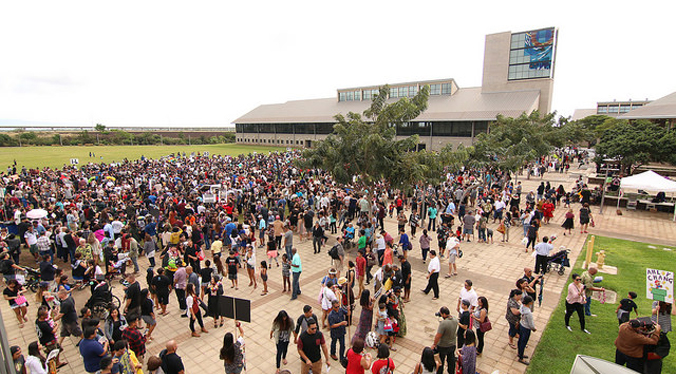
The University of Hawaiʻi–West Oʻahu led all U.S. public baccalaureate institutions in enrollment growth between fall 2005 and fall 2015, according to a ranking by the Chronicle of Higher Education.
The school’s student body more than tripled (from 858 to 2,692 students, or almost 214 percent) topping enrollment growth at 87 other U.S. public institutions focused on four-year degrees. The increase was more than 10 times the average growth for peer baccalaureate institutions in the ranking (19.4 percent).
“UH West Oʻahu is taking bold steps forward to prepare our 21st Century workforce comprised of business innovators and social entrepreneurs, educators, health professionals, farmers and scientists, artists and cultural practitioners, and many more,” said UH West Oʻahu Chancellor Maenette Benham. “Our growth reflects the growing health of West Oʻahu!”
UH West Oʻahu’s enrollment has been on an upward trajectory for more than a decade. The survey period used by the Chronicle of Higher Education included two significant events in the campus’ history: In 2007 the school expanded from a two-year school with junior- and senior-level curriculum to a four-year school that admitted freshman. In August 2012, the school moved to newly constructed facilities in Kapolei, giving the campus a permanent home.
The ranking was part of The Almanac of Higher Education 2017–2018, an annual look at the state of higher education that includes more than 80 tables and articles and is published by the Chronicle of Higher Education. UH West Oʻahu’s top ranking was included in a group of tables under the heading, “Fastest-Growing Colleges, 2005–15”.
UH West Oʻahu also ranked highly in the publication’s ranking of colleges with the greatest racial and ethnic diversity for Fall of 2015. It placed third in the four-year public colleges category behind University of Hawaiʻi at Hilo and the University of Hawaiʻi Maui College, and ahead of the University of Hawaiʻi at Mānoa.
The Chronicle of Higher Education is considered one of the leading publications covering college and universities with a newspaper readership of more than 215,000 and a website seen by more than 1.9 million unique visitors each month.
—By Greg Wiles

